The first greenhouse Toby Wright grew tomatoes in, had a 3.5m gutter height. Ever since then, he's been following the developments in the industry very closely and has reaped the opportunities being offered by the use of new techniques in order to look for means to be more competitive. That is, only using them when they make sense. "It is important that we maintain a logic in our growing approach," he says. In his greenhouse Les Serres des Grands Lac he currently grows tomatoes in South West France, for the Rougeline cooperative.
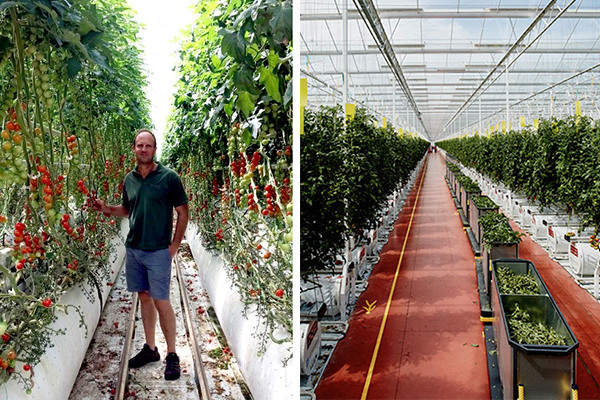
Ireland, Kenya, and France
There's a very international and very interesting story behind Toby Wright. Of Irish origin and born in Kenya, he completed his higher education at an English Agricultural College (RAU) where he qualified with a degree in Crop Science. He worked in various manager trainee roles in the UK fresh produce industry (MDS) before getting his first ‘serious’ job with a horticulture grower/packer exporter in Kenya. Progressing through the ranks quickly, he became General Manager of the business employing 1500 people.
In 2006, Toby and his wife decided to start a new adventure and moved to the southwest of France, where they took over an existing farming/greenhouse operation from a local retiring farmer, supplying Rougeline with various fruit and vegetables. Passionate about growing tomatoes in a so-called ‘controlled’ environment, it was necessary for him to look for means to become more competitive – and so the next adventure started, where he teamed up with 3 other business partners, recovering residual ‘waste’ heat from other industries in order to heat their greenhouses. Today the business is recovering waste heat from 2 separate suppliers, allowing them to cultivate 25ha of various different tomato varieties in very modern, high-tech greenhouses.
"The ‘greenhouse build concept’ has developed significantly in the past 20 years," says Toby when he's asked about the big evolution steps of the greenhouses he has been working in so far. "I started growing in a greenhouse with a 3.5m gutter height, this has increased to 7.4m with a significantly larger span, thinner profiles, allowing the use of larger glass panes."
"The light penetrating onto the crop has increased significantly, and due to the size the ergonomy for the greenhouse employees has significantly improved."
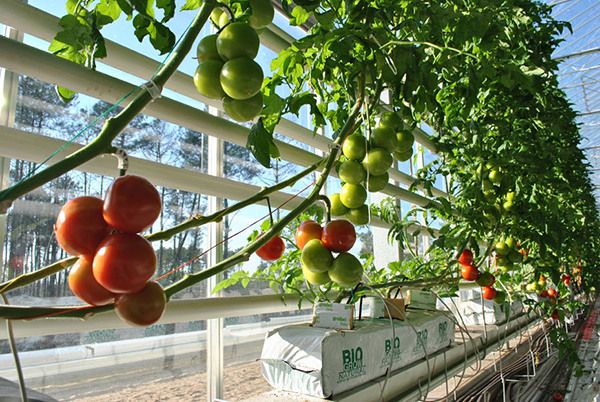
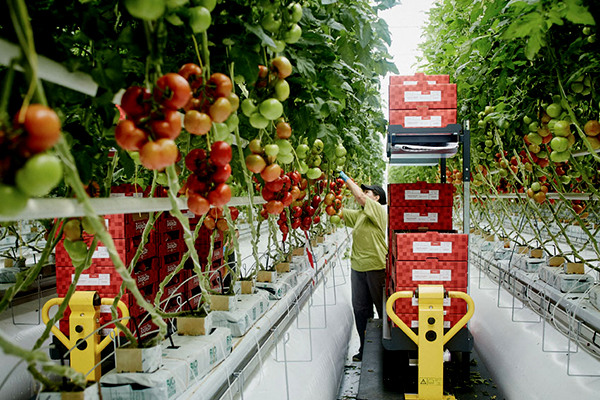
Semi-closed greenhouses
A significant step forward was the introduction of the semi-closed greenhouse builds in 2014, Toby says. "Particularly in our hot summers, where we can experience temperatures of 40°C, the temperature in the greenhouse rarely gets above 28-30°C due to active pad cooling capabilities. These actively controlled greenhouses allow us to filter in the outside air and filter out any nasty greenhouse pests. The semi-closed greenhouses are more efficient in heat consumption and are well adapted to recover low-temperature grade industrial waste heat."
He adds that today, he has more and more sensors available to not only monitor the greenhouse climate but also monitor plant behavior. "This has allowed us to become a lot more precise, and reap higher yields of better quality tomatoes. These, more precise, high-tech growing facilities have helped to create a more favorable growing environment, and more importantly to grow pesticide-free tomatoes across the entire 25ha site."
Ecoserre
Of great value for Les Serres des Grands Lacs and the Rougeline cooperative is the Ecoserre concept. In France, sustainability is valued highly and greenhouses are watched closely.
The ‘Ecoserre’ concept was a brand label introduced by Rougeline in 2010, responding in particular to the first Les Serres des Grands Lacs greenhouse build, which was recovering residual waste heat from adjacent crude oil wells. Ever since then, greenhouses are only awarded the Ecoserre label if they adhere to strict standards. This means that each greenhouse is different, but that they all share a few main principles: the heat is provided by the use of renewable or residual energy, that the consumption of water and fertilizers is adjusted and reduced as much as possible (recycled), that Integrated Pest Management is used, that all materials used in the growing process are recycled and that it must generate local employment.
Toby explains how this approach isn't limited to a particular subject. "It is important that we maintain logic in our growing approach, sticking to natural materials where possible in the growing environment. For example, we chose to grow our tomatoes in coir grow bags. The coir can be easily recycled at the end of the season, either being spread onto neighboring farm fields to help improve the organic matter content or supplied to various companies doing potting plants."
They chose to work with Biogrow substrates, a company that is part of the Vila Group and that values the same holistic approach in operating their business with an eye on sustainability and long-lasting relationships. And, according to Toby, the fact that Biogrow recognizes that one size does not necessarily suit all growers is another important reason to work with them, something that might originate from the fact that Biogrow has been developed by growers themselves.

"Biogrow has been innovative in seeing the need for tailor-made substrates. We worked with them to develop a suitable grow bag with a specific volume, grow bag retention/tightness, and specific density to suit our growing technique," he says. "In summer, we experience very high transpiration rates due to high light intensity (>1000w) and need to have a suitable substrate that ensures that the plants are supplied with an optimum quantity of water/nutrient whilst avoiding asphyxiating the roots. Our various greenhouse slab and plant sensors indicate that we need to irrigate frequently, and our coir grow bags allow us to do this perfectly."
And there's more, Toby shows us proudly in his very own Ecoserre. All the substrate bags are showing the company's logo. "They even customize our grow bags now to add a little fun to the greenhouse décor."
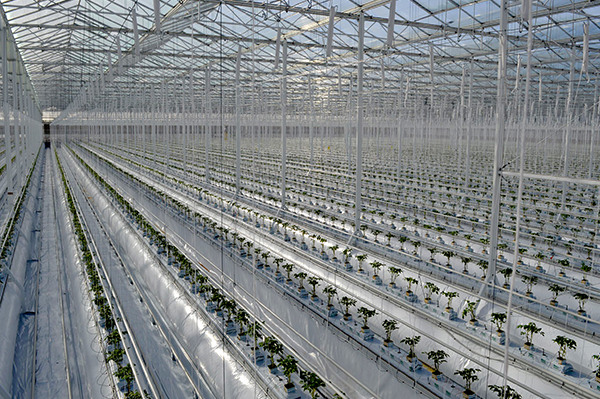
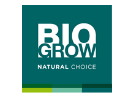
For more information
Biogrow
contact@bio-grow.com
www.bio-grow.com
Pour plus d’informations :
Gilles Bertrandias
Les Paysans de Rougeline
Chemin de Cazeaux
47213 Marmande cedex
Tél. : +33 (0)5 53 20 51 50
g.bertrandias@rougeline.com
www.rougeline.com
